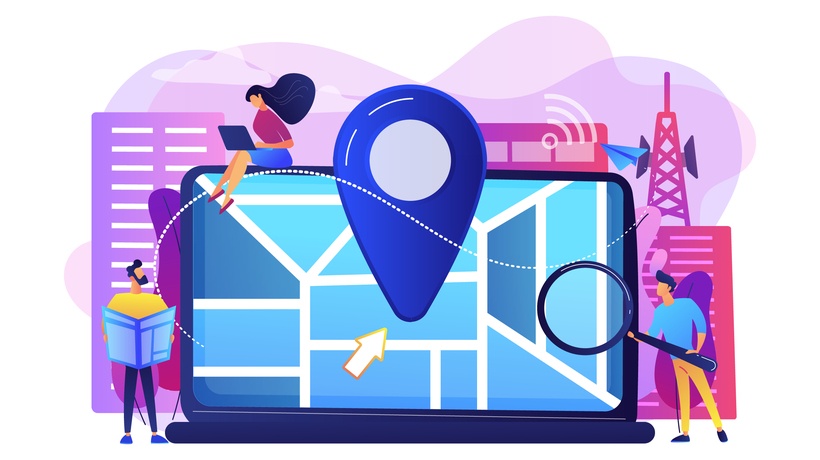How To Have The Worst eLearning SEO In The Industry
That being said, SEO is a component of eLearning that’s new for a lot of companies. Knowledge can vary from nothing to some experience, and often depends on how much help the marketing department is willing to give. If your background is as an educator and not a marketer, it can be hard to know if you’re doing well, but one way to judge SEO success is to address what you could be doing wrong. Here are some big "no-no"s:
1. Don’t Worry About Keywords (And Forgo Research!)
Selecting great keywords is the foundation for all effective SEO. Keywords are what your audience will type into the Google search bar when they’re looking for information to satiate their curiosity. So, if they search “leadership training” you want your course to show up as a top result, right? You do that by using those words—strategically, because the days of keyword stuffing are over—throughout your content.
“Leadership training” is probably a highly competitive keyword, however; a lot of websites want to rank highly for that word. One of the most important things to research is similar keywords that not only get searched a lot, but are more specific to you and less competitive. For example, you could try to rank for “online corporate leadership training.” The competition might not be as hard to overcome, which makes it easier to rank.
There are a lot of keyword research tools designed to make this process easier, like KWFinder[1], Ahrefs[2], and Google AdWords Keyword Planner[3]. These tools will help you look at the search statistics for a particular keyword. This way, you can find the right balance between a specific keyword and a competitive keyword that gets a lot of searches.
2. Disregard The Importance Of Hyperlinks
If Google is trying to decide which page should rank higher for a keyword, and they both use it plenty, they will try to decide which page is more authoritative. And they will do that by seeing how many other pages link to that page as a reference. On top of that, they will judge how meaningful the link is by how authoritative the page creating the link is.
There are lots of ways to build backlinks[4], but the basic rule is: be sure to link to other areas of your website and to link to other websites throughout when you’re creating content. This bare minimum will be a cushy boost to your SEO.
3. Expect Everything To Be Free
While you can most assuredly take a more organic approach to promoting your eLearning [5], it’s critical to note that supplementing those efforts with some paid efforts can only increase your exposure and success.
Investing in SEO content writers to create SEO-friendly web pages is a great way to naturally boost your reach, while also ensuring any paid traffic you send to these SEO-optimized pages converts at a higher rate.
Which brings us to our next point: pay per click (PPC) advertising. There are many PPC sources available on the internet (Google, obviously, is king), so be sure to do some research and find out where your money might best be spent. When done right, PPC can be a great way to utilize the power of search for promoting some of your most important content.
4. Be An eLearning Industry Introvert
One great way to raise awareness of your services (and build backlinks!) is to interact with other presences on the web that are relevant to your coursework. Instead of staying in your corner of the internet, reach out to blogs and websites that discuss the same topics as your coursework. Write guest posts or web pages about the topic and link readers back to your services. For example, if you create business courses, you may want to partner with a business guru who can tell her audience about them while discussing how to gain business leadership skills. Even just interacting on these websites via comments can bring your offerings some attention.
Another great way to boost SEO via interaction is to have any review websites look at your courses and give an honest review of your services. That will create links and also generate more information about your company on the web for potential customers and clients to discover.
Also be sure maintain a presence on social media – this will help you interact with your industry and build the relationships necessary for creating great SEO through things like backlinks.
5. Make Your Website Difficult To Navigate
Search engines care about your website being easy to navigate. While aesthetics may seem shallow, usability is actually a big SEO factor. A well-organized website also makes it easier for the algorithm crawler to index and find all the links on your site. It also must be coded correctly[6] so that the search engines can read everything properly.
When all your navigation is put together, you should test it out with Google webmaster tools[7] to make sure the crawlers can reach every corner of your site.
It can also tell if your text is user-friendly and easy to read, not just big blocks of text. A reader-friendly website is more useful to readers, so search algorithms will rank it higher. Break up text and add plenty of headers.
Good Luck With eLearning SEO
Great SEO takes time to build up and there’s no clear timeframe of when you might start seeing results. But eCommerce business models will find endless benefits from it. At least you won’t have the worst eLearning SEO, thanks to this article.
References:
[1] KWFinder. https://kwfinder.com/
[2] Ahrefs. https://ahrefs.com/
[3] Google AdWords Keyword Planner. https://adwords.google.com/home/tools/keyword-planner/
[4] Tarcomnicu, F. (2015). 10 Smart Ways to Earn or Build Backlinks to Your Website. Retrieved May 31, 2018, from https://www.entrepreneur.com/article/247984
[5] eLogic Learning, 2016. "How to promote your online training courses." Accessed May 31, 2018. https://elogiclearning.com/how-to-promote-your-online-training-courses/
[6] Kledzik, K. (2013) Guide to Site Navigation for SEO. Retrieved May 31, 2018, from https://www.distilled.net/blog/seo/site-navigation-for-seo/
[7] Google, n.d. "Index Status report." Accessed May 31, 2018. https://support.google.com/webmasters/answer/2642366?hl=en








